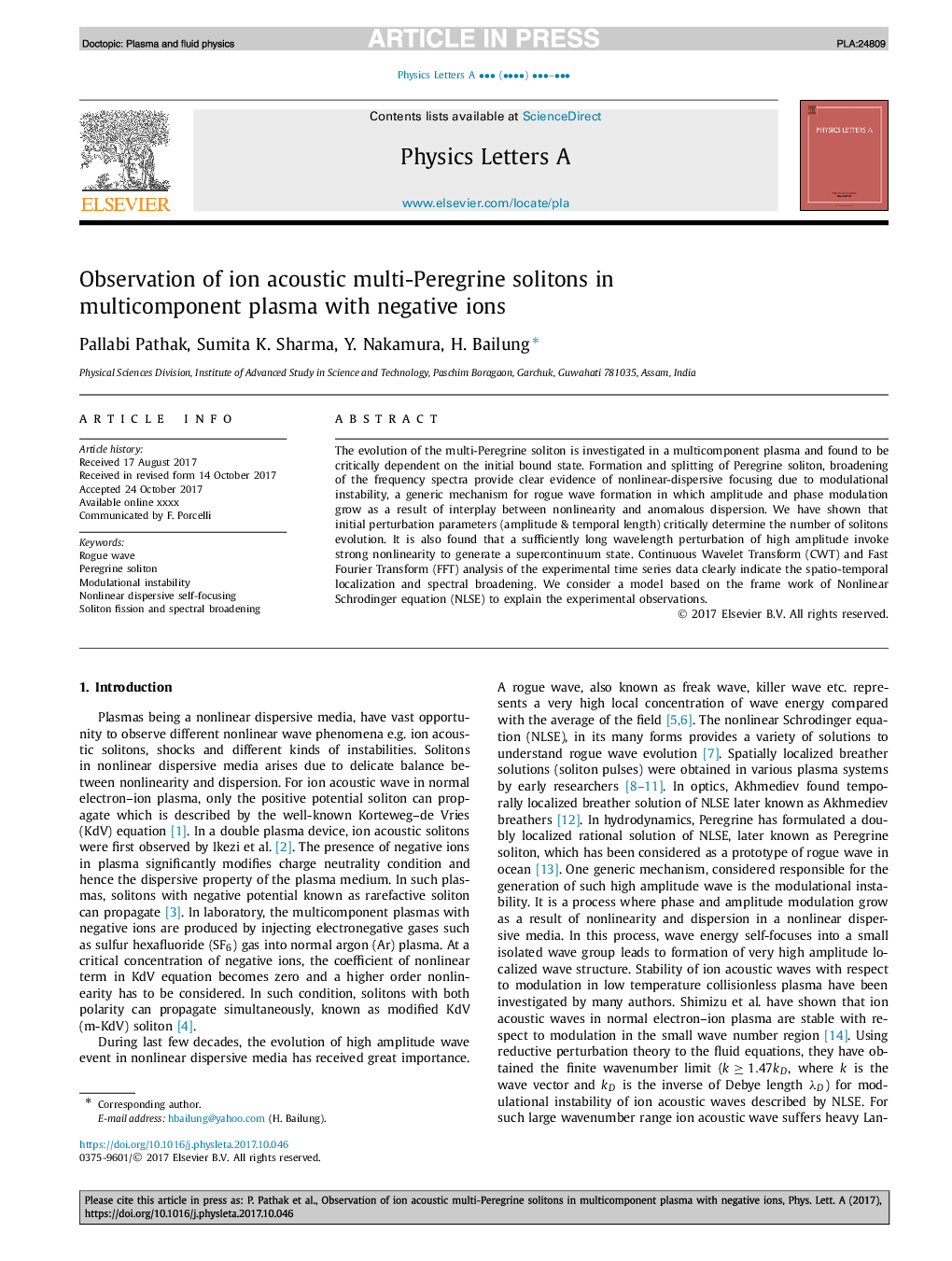| Article ID | Journal | Published Year | Pages | File Type |
|---|---|---|---|---|
| 8204368 | Physics Letters A | 2017 | 8 Pages |
Abstract
The evolution of the multi-Peregrine soliton is investigated in a multicomponent plasma and found to be critically dependent on the initial bound state. Formation and splitting of Peregrine soliton, broadening of the frequency spectra provide clear evidence of nonlinear-dispersive focusing due to modulational instability, a generic mechanism for rogue wave formation in which amplitude and phase modulation grow as a result of interplay between nonlinearity and anomalous dispersion. We have shown that initial perturbation parameters (amplitude & temporal length) critically determine the number of solitons evolution. It is also found that a sufficiently long wavelength perturbation of high amplitude invoke strong nonlinearity to generate a supercontinuum state. Continuous Wavelet Transform (CWT) and Fast Fourier Transform (FFT) analysis of the experimental time series data clearly indicate the spatio-temporal localization and spectral broadening. We consider a model based on the frame work of Nonlinear Schrodinger equation (NLSE) to explain the experimental observations.
Keywords
Related Topics
Physical Sciences and Engineering
Physics and Astronomy
Physics and Astronomy (General)
Authors
Pallabi Pathak, Sumita K. Sharma, Y. Nakamura, H. Bailung,
